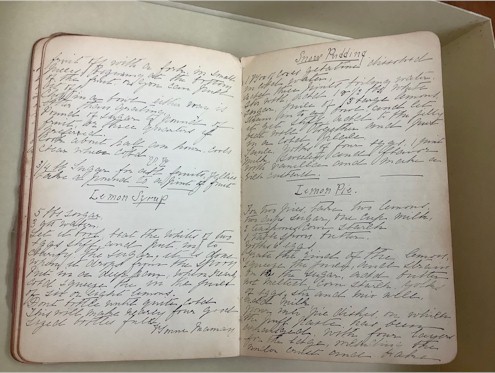These presentations were made at the Illinois History Conference at the Abraham Lincoln Presidential Library and Museum in October, 2021. Since this is ongoing research, there will be additional information learned after this event. Continue reading
Category Archives: Chicago Foodways Roundtable
Crofton Cook Book Club: Manuscript Cook Book from Fort Sheridan, 1895
A Tale of Two Food Journalists: ‘Jane Eddington’ of Chicago Tribune, 1910-1930 and Alma Lach of Chicago Sun-Times, 1957-1965
‘My Dear Miss Eddington’: Reader Letters and
Early Twentieth Century Food Media
Let’s Eat! Celebrating with Food
Debbie Fandrei, Raupp Museum
Korean Cultural Center of Chicago
Let’s Eat! Celebrating with Food explores food, culture and history from the American and Korean viewpoints. Learn where people got their ingredients, how technology has changed food preparation, and explore how one ingredient, cabbage, can become very different dishes (sauerkraut and kimchi). We will compare how the harvest holidays of Thanksgiving and Chuseok are expressed in American and Korean culture. Continue reading
First Catch Your Gingerbread! UK Supper Clubs: What Are They?
Sam Bilton, Food Historian and Restauranteur
Food historian and writer Sam Bilton is encouraging bakers to immerse themselves in the joy of making gingerbread.
Gingerbread is a lovely, squidgy treat which has played a part in almost everyone’s childhood. But do you know what gingerbread was made of when it first arrived on our plates? Was it flavoured with honey? Continue reading

